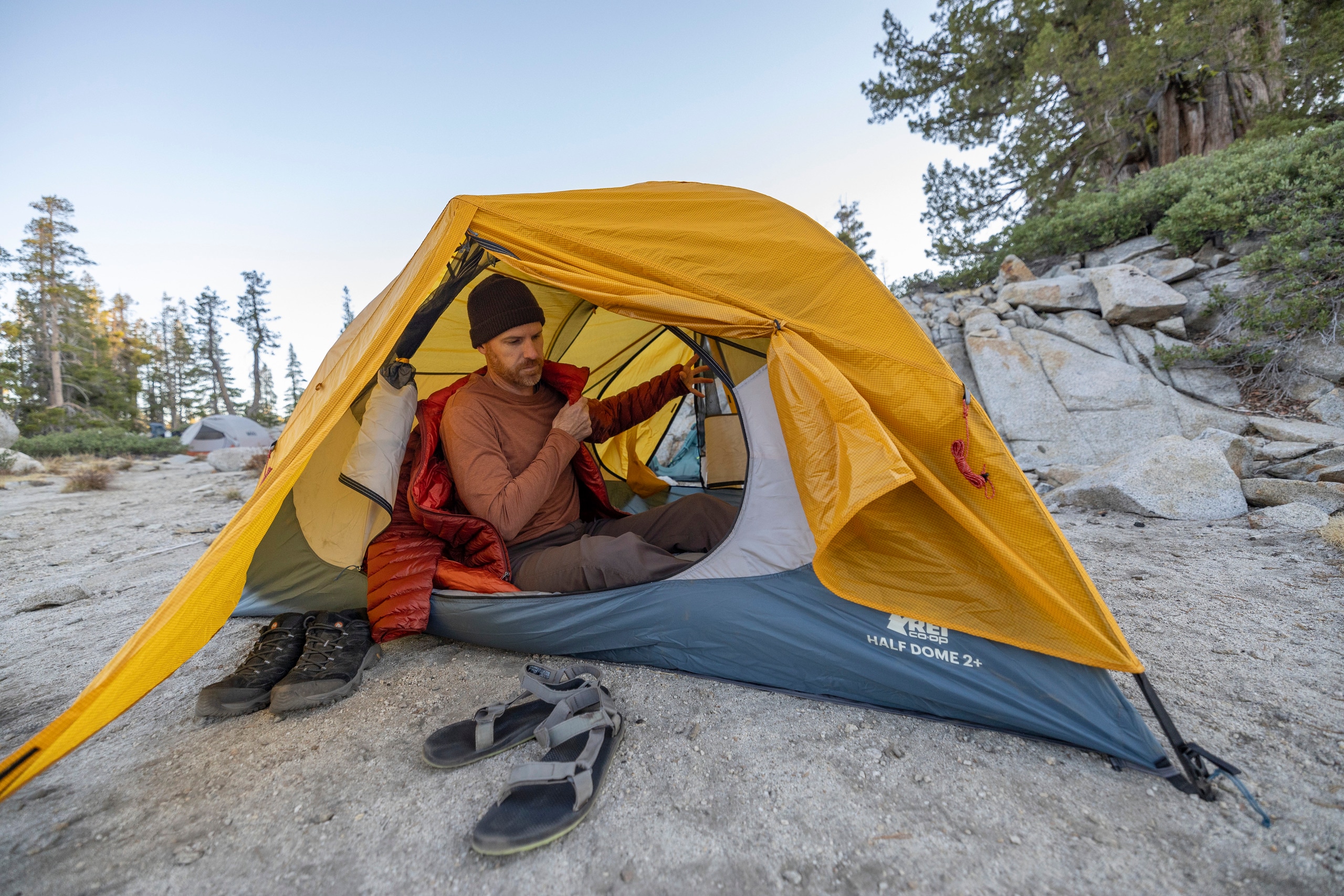How to Choose a Backpacking Tent

This product is not available.
Combining old school camping techniques with modern tech, the 2-person Mountainsmith Mountain Tipi tent offers multiple setup methods: A standalone tipi, tipi with nest and a standalone nest.
Shop similar productsImported.
View all Mountainsmith Backpacking Tents| Best Use | Backpacking |
|---|---|
| Seasons | 3-season |
| Sleeping Capacity | 2-person |
| Minimum Trail Weight | 5 lbs. 9 oz. |
| Fly / Footprint Pitch Weight | 3 lbs. 12.5 oz. |
| Packaged Weight | 6 lbs. 15 oz. |
| Packed Size | 7 x 20 inches |
| Floor Dimensions | 110 x 95 x 68 inches |
| Floor Area | 54.7 square feet |
| Vestibule Area | Unavailable |
| Peak Height | 62-68 inches |
| Number of Doors | 1 door |
| Number of Poles | 1 |
| Pole Material | Aluminum alloy |
| Pole Diameter | Unavailable |
| Canopy Fabric | Mesh |
| Floor Fabric | 68-denier x 190T polyurethane 4000mm |
| Rainfly Fabric | 40-denier ripstop nylon |
| Footprint Included | No |
| Design Type | Nonfreestanding |
Adding a review will require a valid email for verification
I like being up to sit up and sort of stand in my tents. I slept in it without the rain fly and no bugs entered. I do understand the concern the other reviewer had of the flimsiness, that coupled with the lack of footprint makes me think this isn't going to last long despite the mountain-smith warranty. I might not have gotten this if it were not on sale. My alps ready lite cot just barely fit in it. In ground that is too soft or hard this will be unusable. Oddly enough the pole doesn't go to max height following the directions of set tent spikes in first then pole. This is on the heavy end for backpack camping but comfortable items usually are.
I was attracted to this product by its one-of-a-kind design and the simple set-up it boasted. As a car-camper, I was stoked on trying something out of the ordinary for my next trip. The tipi is lightweight, the set-up was fun, and the inside is spacious—save for the pole in the middle (which also makes it impossible to cuddle up)! I also attempted to utilize the "hybrid" aspect of the tipi and use its fly as shelter at the beach. No dice. I think the shelter is meant for grass, not sand. Ultimately, I feel like I could have gotten more bang for my buck with a run-of-the-mill tent. A cool idea, but the price is simply not right for a casual camper on a budget.
Hangtag (and manufacturer's original web description) lists fly material as ripstop silnylon. Yes, it is ripstop (for novices, look for a reinforcing grid of heavier threads); but it is definitely coated with polyurethane (PU), NOT silicone. PU-coated fabrics have much lower tear strengths and the PU will degrade in time. The floor is likely NOT 4000mm HH waterproofed--a number that is almost in the range of more waterproof European tent floors. It looks to me in the 1500-2000 mm range you find in most entry-level American tents--adequate but not up to a multi-day storm. The mosquito netting is loosely woven compared to the tighter weaves of tricot mesh found in top-quality tents. This tent would be adequate for modest endeavors but is definitely lower quality than the Golite Shangri-La 3 that used the same basic pattern. This tent looks like a special production run of a closeout item, using cheaper materials than claimed when the tent was introduced. As a former REI employee, I can tell you that many items sold in REI's seasonal sales are "special production runs," meaning the Chinese factory is using up stray materials on hand. I am returning this purchase unused. Comments based on 50 years of design and production of mountain gear.